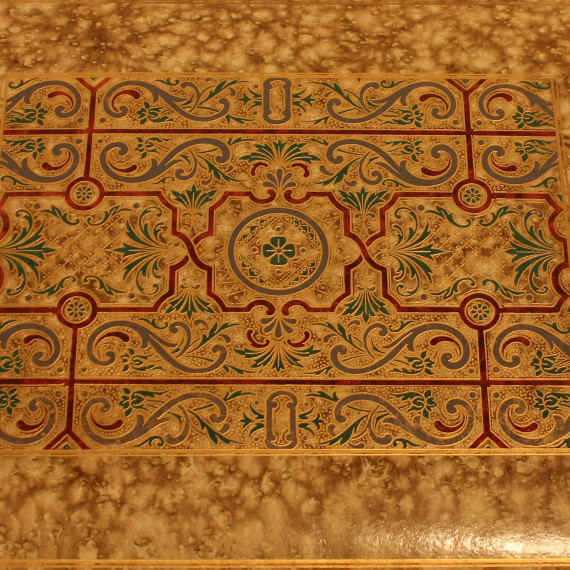The Lederwaren- und Kartonagenfabrik Zucker

The rise of the Zucker leather goods and box factory is a typical example for the establishment of medium-sized enterprises during the second half of the 19th century. The factory emerged from a bookbinder's workshop opened by bookbinder Carl Zucker in 1869. After a business partner joined the enterprise, leather goods manufacturing was added to its operations in 1885. The Portefeuille- und Cartonagenfabrik Zucker & Cie ('Zucker & Co Portfolio and Cardboard Goods Factory') manufactured pocket-sized leather cases, albums, writing cases, notebooks, and similar stationery goods. Power engines were first used in 1888.
After several relocations, the company become firmly established towards the end of the 19th century. The bookbinding workshop was housed in new outbuildings added to the house at No 1, Friedrichstraße, while portfolio manufacture moved to a new building on Bayreuther Straße. In 1899, the enterprise was converted into a public company. It then employed 280 workers, making it one of the most important employers in Erlangen. A large proportion of its products was exported, especially to England, France, and Austria.
Following the First World War, the company gradually lost its former significance in the town's economic life. It was wound up in 1989 following losses in the cardboard box segment.
From the steam engine to the electric motor
The steam engine is one of the industrial revolution's foundational inventions. It delivered, for the first time, a driving force that was no longer bound to a natural power source, and so enabled machines to spread quickly. Through the development of the steam locomotive and the steam ship, it soon also revolutionised the transport system. Later, it was used to drive generators for the production of electricity.
Towards the end of the 19th century, new engine types emerged: the internal combustion engine, whose predecessor was the gas engine, and the electric motor. In industrial production processes, the steam engine was in most instances initially replaced by a central electric motor. In order to avoid losses in power transmission, industrial plants slowly transitioned to individually motorised machines. Transmission systems became obsolete so that working spaces became brighter, and hazards were reduced. In contrast to steam engines, electric motors did not require a large initial investment. With increasing electrification, this economic power source also became accessible for artisans.
In 1907, Erlangen had a total of 40 steam engines, and 124 electric motors connected to the public electricity grid. Some large industrial plants still had their own, steam-powered power stations. The municipal power station founded in 1902 first operated using gas engines.
< Previous chapter | Next chapter >
